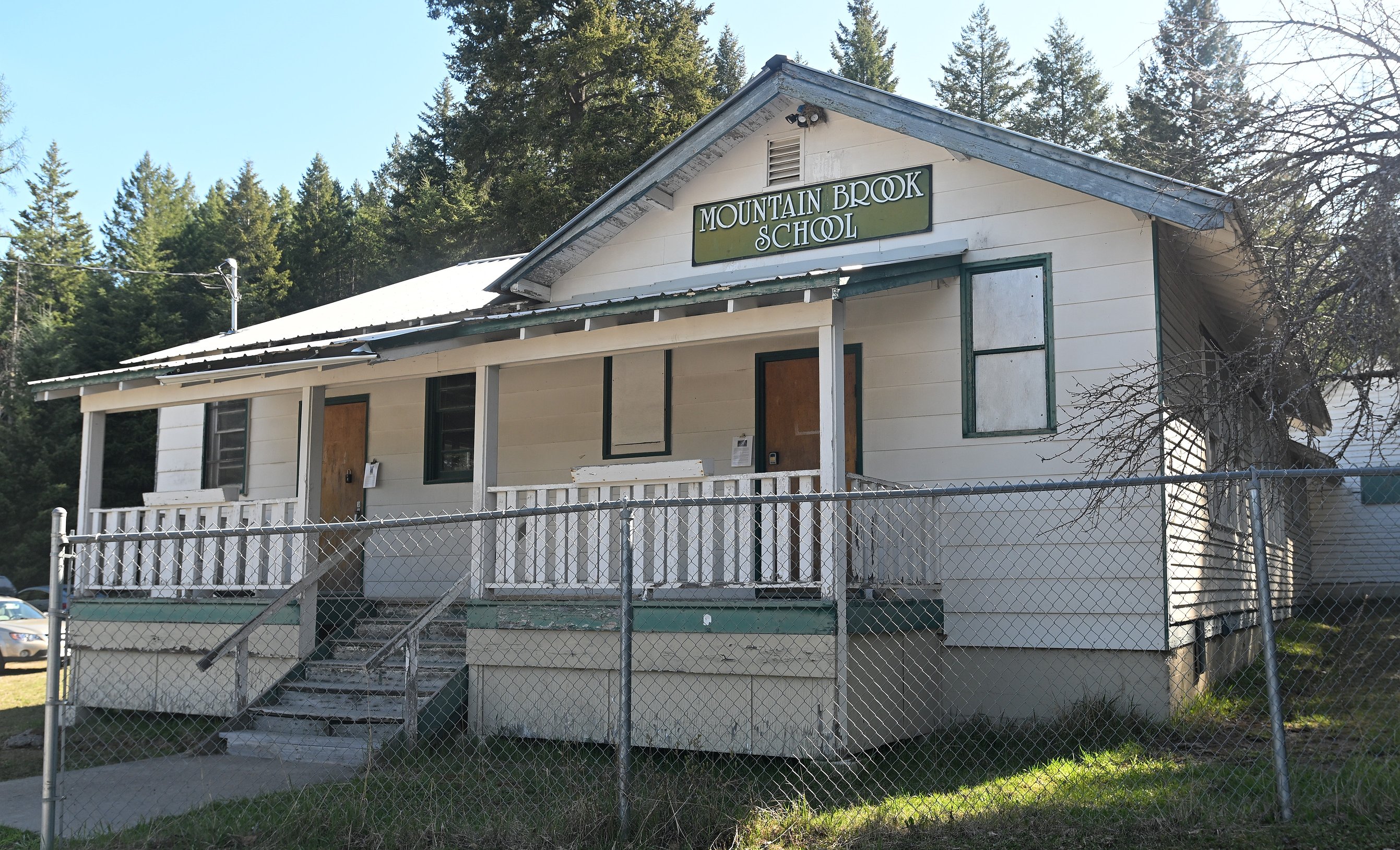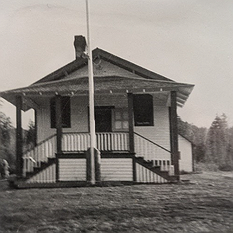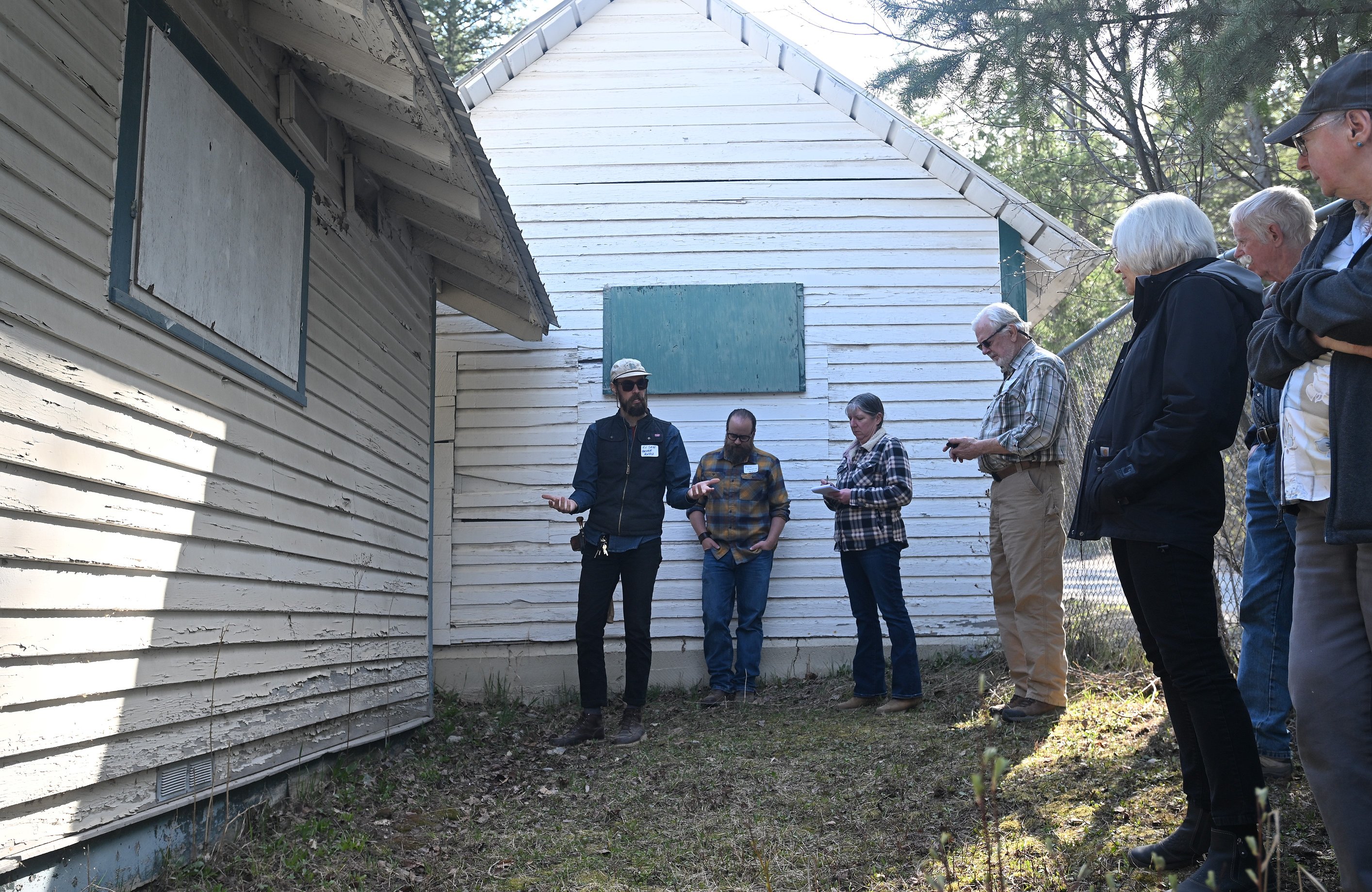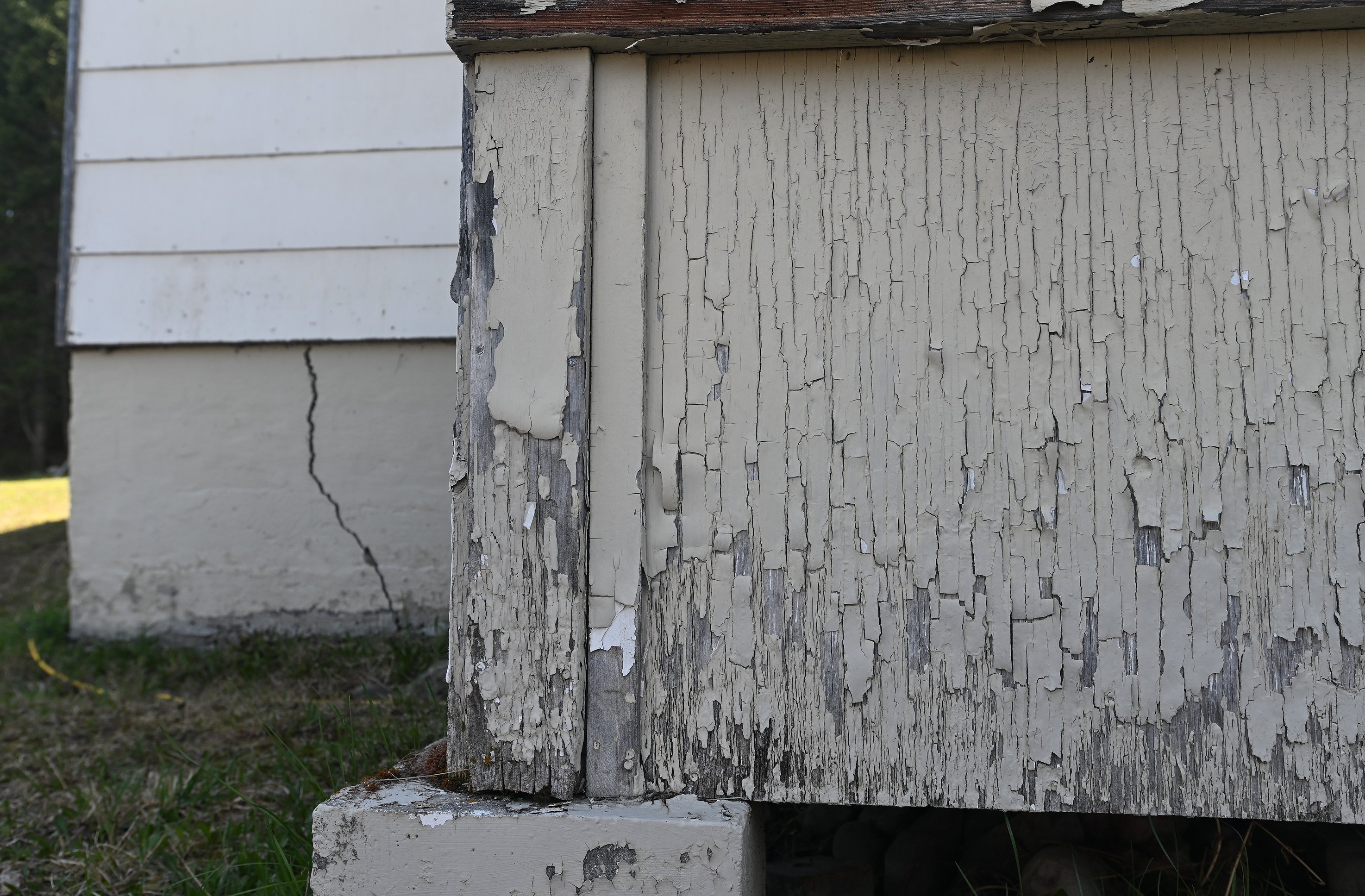Description
Mountain Brook is a blink-and-you-miss-it kind of place. Located on the eastern edge of the Flathead Valley, the rural community has never boasted more than a handful of residents.
Longtime resident Susan Horner-Till said there’s one surefire way to know you’re in the right spot: look for the old schoolhouse.
“This is the focal point,” she said, gesturing around the school grounds on Foothill Road east of Creston. “You know you’re in Mountain Brook when you’re here.”
The little white schoolhouse has stood sentinel over Mountain Brook since 1922, though a myriad of safety concerns now bars the building from use. Cracks zigzag through the concrete foundation. Chips of white paint drift from the siding like oversized asbestos-infused snowflakes. Inside, a plastic tarp hammocks a growing collection of mold between two rafters.
Such symptoms are familiar to many of the state’s rural schools.
Montana boasts more one-room and two-room schoolhouses than any other state in the nation. Most were built in the early 20th century to serve small pioneering towns like Mountain Brook that now face declining populations. About 60 of Montana’s 800 documented one-room schoolhouses currently operate as educational institutes. A handful of others have been converted into museums and historical sites. Many have been abandoned to time, left to decay in far-flung corners of the state.
The loss of these historic schools extends far beyond simple brick and mortar.
"That architecture, that building is very special to us, but it’s also this vessel for these stories,” said Dustin Kalanick, an architect specializing in the preservation of historic buildings.
While schools and other historic structures often carry deep meaning, residents often lack the funds and technical expertise to undertake renovations on their own. Kalanick recently partnered with the nonprofit Preserve Montana to address this issue through a series of workshops aimed at catalyzing community projects that preserve and restore rural schoolhouses. At each stop in the series, Kalanick and Preserve Montana’s restoration director, Eli Smith, met with local leaders to evaluate the repair needs and brainstorm future uses of a decommissioned historic schoolhouse.
“There’s a lot of this that’s just listening to the building and what it is giving us,” said Kalanick.
UNDERSTANDING THE full story of the Mountain Brook campus requires a trip back to 1908, when locals erected a log cabin to serve as the community’s first classroom. The population of the booming timber town quickly outgrew the cramped structure, and in 1922, residents pitched in to build a new schoolhouse. Small luxuries such as a front porch and running water and electricity were added over the years, but the 1922 schoolhouse retained many of its original rustic charms.
By the 1990s, the student body of Mountain Brook School began to dwindle. Few students meant few funds to address a growing list of maintenance needs. In 1992, Mountain Brook School was consolidated into Cayuse Prairie School, though a few students continued to attend classes at the old campus through 1995, including Horner-Till's eldest daughter.
For the remainder of the 20th century, Cayuse Prairie used the rural campus for field trips, including an annual event called Holocaust Day of Hiding, in which students walked to Mountain Brook School from Cayuse Prairie School and hid in the old buildings, pretending to be European Jews during World War II. Other special educational events, such as Medieval Day and Pioneer Day, featured demonstrations from local parents donning traditional garb.
Gradually, though, these events waned. From her house across the street, Horner-Till watched as the old schoolhouse was boarded up. She mourned the sound of children at play.
“I just have this feeling that the campus likes being used by the community,” she said. “I just feel that the community belongs here. This is the center of Mountain Brook.”
In 2002, Horner-Till gathered with other concerned residents to form the Mountain Brook Homestead Foundation. The group lobbied the school board to take over ownership of the unused school campus. It was far from a simple process.
Back in 1927, the Brown family donated the acre of land the school stands on, under the stipulation that if the property was no longer being used for educational purposes, the deed would revert back to their family. Generations had since died, and it was unclear who should inherit the title to the land.
While Cayuse Prairie initiated a quiet title suit to identify the rightful owner, the Mountain Brook Homestead Foundation took over maintenance of the campus. For the annual price of $12 plus the cost of utilities and insurance, the organization rented Mountain Brook School from Cayuse Prairie.
The foundation quickly converted the newer gymnasium building into a community library and meeting space, but the one-room schoolhouse had far greater repair needs. The group devoted what time and energy they could to the building. Volunteers retrofitted the beams, tore out flooring riddled with asbestos and patched up holes in the roof.
Finally, in 2020, the court identified Earleen French as the rightful heir to the school campus. French, in turn, donated the school to the Mountain Brook Homestead Foundation. She said her decision meant the property went “back to the community, where it should be.”
THE FOUNDATION is now focused on returning the schoolhouse to a usable state. Sharon Martin has spearheaded much of these recent efforts after joining the organization in 2023. The small community group, she said, has undergone “a lot of growing pains, but really good growing pains” in recent years.
Last month, the organization secured funding through Montana West Economic Development to test the campus for lead paint, asbestos and other potentially harmful substances, and Martin is now coordinating with officials to add the campus to the National Register of Historic Places.
The Preserve Montana workshop is another step in the right direction. On a crisp morning in late April, Martin, Horner-Till and a dozen other members of the Mountain Brook School gathered on the steps of the schoolhouse.
Kalanick and Smith lead the crowd around the building, pointing out various age spots in need of repair. There was undoubtedly a lot of work to be done, but that was to be expected. Old buildings can be finicky, even demanding.
“They’re a bit emotional. They get lonely really easily,” Kalanick told the group. “It’s clear this building has been cared for and loved.”
“It’s grateful,” Smith agreed.
At the end of the day, the prognosis was hopeful. With a little time and effort, Kalanick and Smith assured the foundation that the old schoolhouse could be restored to its former glory. Over lunch, board members simmered with ideas on how to use the space once renovations were complete. Ideas of a museum or a cottage craft school formed.
Only time will tell how the schoolhouse is reformed for the modern age, but one thing is certain. Mountain Brook School still has plenty of stories to tell.
For more information on the Mountain Brook Homestead Foundation, visit mtbrookfoundation.org.
Reporter Hailey Smalley may be reached at 758-4433 or [email protected].
 The historic Mountain Brook School can be seen from Foothill Road. (Hailey Smalley/Daily Inter Lake)
The historic Mountain Brook School can be seen from Foothill Road. (Hailey Smalley/Daily Inter Lake)
 The earliest known photo of the Mountain Brook School shows the building before it was expanded in 1955. (Mountain Brook Homestead Foundation)
The earliest known photo of the Mountain Brook School shows the building before it was expanded in 1955. (Mountain Brook Homestead Foundation)
Other Related News
05/18/2025
A suspected shoplifter arrested after threatening employees of a big box retailer last ye...
05/17/2025
An explosion tore through a fertility clinic in the upscale California city of Palm Spring...
05/17/2025
Bozeman could become the first city in Montana to create a legal defense system for renter...
05/17/2025
GREAT FALLS Bird scooters will end operations in Great Falls next week leaving Bozeman as...
05/17/2025














